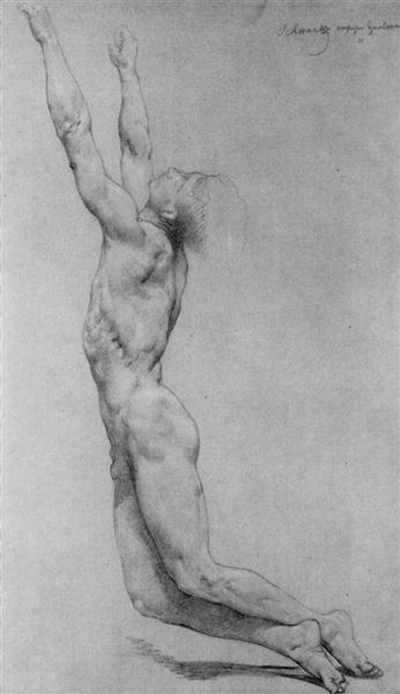This study sketch is dated at 1880, whilst the completed painting of The Flagellation of Christ is loosely placed at 1880-1882
Figurative paintings are amongst the most challenging genre within art and therefore require considerable practice in order to achieve the highest standards. Artists such as Bouguereau would produce beautiful portraits only having put in the time earlier on in their careers, even the likes of Michelangelo and Da Vinci would spend countless hours on perfecting their skills.
William-Adolphe Bouguereau was fortunate in that he was able to afford live models which helped his development as a figurative artist. He also attended famed art schools in his younger days where the key techniques would have been taught to him.
The Flagellation of Christ was a complex composition for which the artist would have completed multiple study drawings, certainly not just the single one that we see here. His prepatory work for Nymphs and Satyr, for example, boasted ten to twenty detailed sketches prior to completing the final oil based canvas. There is also evidence within some of these drawings which outlines amendments made over time, such as changing the model or altering their pose.
Bouguereau is one of the most famous artists with regards these types of multiple figurative portraits and although some artists have been less than complementary about his style, there have been many supporters of his work over the years. His academic techniques may not have enough creativity for some but many art fans today are drawn to his career because of the charming portraits he produced and also the simple beauty of his scenes.
The art scene is certainly large enough to be able to hold all styles, and each artist should be respected for using whichever style appeals to them. Dismissing someone so abruptly, despite their considerable technical skills, seems arrogant and self-righteous. Raphael would sadly also receive similar treatment despite being considered by many to be one the three main Renaissance masters.




